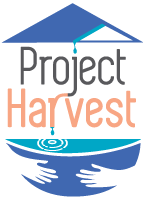To view a different methodology/ contaminant suite:
Please select the year, sampling season, location, and sample type you would like to view.
Important note: The use of SRB for assessment of contamination is very unique to this project. Though preliminary research suggests that SRB may be a strong indicator of fecal contamination, this has not been tested in harvested rainwater or in the American Southwest. In the third year of the project, we will compare the number of E. coli and Total Coliforms (for which there are standards) to the number of SRB (for which there are no standards) in each sample. We hope to discover that homeowners will be able to use a kit that identifies a non-pathogenic organism (SRB) to assess the quality of their harvested rainwater. This would be very exciting, given that at-home kits for microbial water quality assessment do not exist.
Results shown below the Method Limit of Detection (MLOD) were measured at a time when the instrument's ability to detect was better, which provided a lower MLOD than shown here.
Important note: The use of SRB for assessment of contamination is very unique to this project. Though preliminary research suggests that SRB may be a strong indicator of fecal contamination, this has not been tested in harvested rainwater or in the American Southwest. In the third year of the project, we will compare the number of E. coli and Total Coliforms (for which there are standards) to the number of SRB (for which there are no standards) in each sample. We hope to discover that homeowners will be able to use a kit that identifies a non-pathogenic organism (SRB) to assess the quality of their harvested rainwater. This would be very exciting, given that at-home kits for microbial water quality assessment do not exist.
Results shown below the Method Limit of Detection (MLOD) were measured at a time when the instrument's ability to detect was better, which provided a lower MLOD than shown here.

